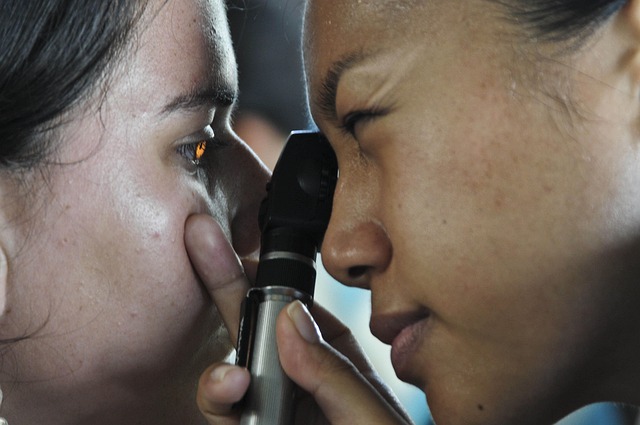Understanding testicular pain: When to see a doctor
Testicular pain can range from mild discomfort to severe, debilitating sensations that require immediate medical attention. While some causes are minor and resolve on their own, others signal serious conditions that need prompt diagnosis and treatment. Understanding the potential causes, recognizing warning symptoms, and knowing when to seek professional help are essential steps in protecting your health and well-being.

Testicular pain affects men of all ages and can stem from various underlying conditions, ranging from minor injuries to serious medical emergencies. The testicles are sensitive organs, and any pain in this area should be taken seriously. While occasional mild discomfort may not warrant immediate concern, persistent or severe pain requires medical evaluation to rule out potentially serious conditions.
Causes of Testicular Pain
Testicular pain can arise from numerous sources, each with distinct characteristics. Trauma or injury to the groin area is among the most common causes, often resulting from sports activities, accidents, or direct impact. Infections such as epididymitis, which involves inflammation of the tube that carries sperm, can cause significant discomfort and swelling. Orchitis, an infection of the testicle itself, may occur alongside epididymitis or independently, often linked to viral infections like mumps.
Testicular torsion represents a medical emergency where the spermatic cord twists, cutting off blood supply to the testicle. This condition typically causes sudden, severe pain and requires immediate surgical intervention to prevent permanent damage. Varicoceles, which are enlarged veins within the scrotum, can produce a dull, aching sensation that worsens throughout the day. Hernias, kidney stones, and referred pain from other abdominal conditions may also manifest as testicular discomfort. In some cases, underlying masses or growths may cause pain, though many testicular abnormalities are painless in early stages.
Recognizing Symptoms
Identifying accompanying symptoms helps determine the urgency and potential cause of testicular pain. Sharp, sudden pain that develops rapidly often indicates testicular torsion or acute injury, requiring immediate medical attention. Gradual onset of pain with swelling, redness, or warmth in the scrotum may suggest infection or inflammation. Fever, nausea, vomiting, or blood in urine alongside testicular pain are warning signs that should not be ignored.
A feeling of heaviness or dragging sensation in the scrotum, particularly noticeable after standing for long periods, may indicate a varicocele. Pain that radiates to the lower abdomen, groin, or back can point to kidney stones or referred pain from other sources. Visible changes such as lumps, bumps, or changes in testicle size or texture warrant prompt evaluation, even if painless. Discharge from the penis, painful urination, or discomfort during sexual activity may accompany infections and require treatment.
Persistent dull aching that continues for days or weeks should be assessed by a healthcare professional, as chronic pain may indicate underlying conditions requiring intervention. Any testicular pain in children or adolescents deserves particular attention, as testicular torsion occurs more frequently in younger age groups.
When to See a Doctor
Knowing when to seek medical care can prevent complications and preserve testicular health. Immediate emergency care is necessary for sudden, severe testicular pain, especially if accompanied by nausea, vomiting, fever, or visible swelling. Testicular torsion requires surgical correction within hours to save the affected testicle, making prompt evaluation critical.
Schedule an appointment with your healthcare provider if you experience testicular pain lasting more than a few days, even if mild. Any detectable lump or mass in the testicle, regardless of pain level, requires examination to rule out serious conditions. Gradual swelling, changes in testicle size or shape, or persistent discomfort that interferes with daily activities should be evaluated.
If you notice signs of infection such as fever, scrotal redness, warmth, or discharge, seek medical attention within 24 hours. Pain following trauma that does not improve within a few hours or worsens over time needs professional assessment. Men with a history of testicular problems, undescended testicles, or family history of testicular conditions should maintain regular check-ups and report any new symptoms promptly.
During your medical visit, your healthcare provider will perform a physical examination and may order imaging studies such as ultrasound to visualize internal structures. Urine tests can identify infections, while blood tests may reveal markers of inflammation or other conditions. Based on findings, treatment may include antibiotics for infections, pain management, surgical intervention for torsion or hernias, or referral to specialists for complex cases.
Self-examination plays an important role in testicular health. Performing monthly self-checks helps you become familiar with normal anatomy and detect changes early. However, self-examination should complement, not replace, professional medical evaluation when symptoms arise.
Testicular pain should never be dismissed or endured without investigation. While many causes are treatable with proper care, delays in diagnosis can lead to complications including infertility, chronic pain, or loss of the affected testicle. Open communication with healthcare providers about symptoms, concerns, and changes ensures timely intervention and optimal outcomes. When in doubt about whether your symptoms warrant medical attention, it is always safer to seek evaluation rather than wait.
This article is for informational purposes only and should not be considered medical advice. Please consult a qualified healthcare professional for personalized guidance and treatment.
Maintaining awareness of your body and responding appropriately to warning signs protects your long-term health and quality of life.




